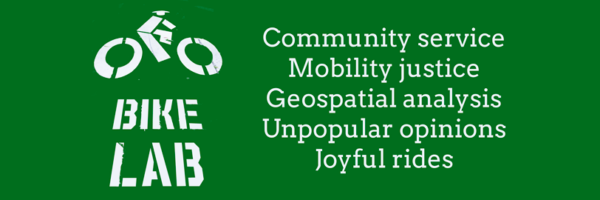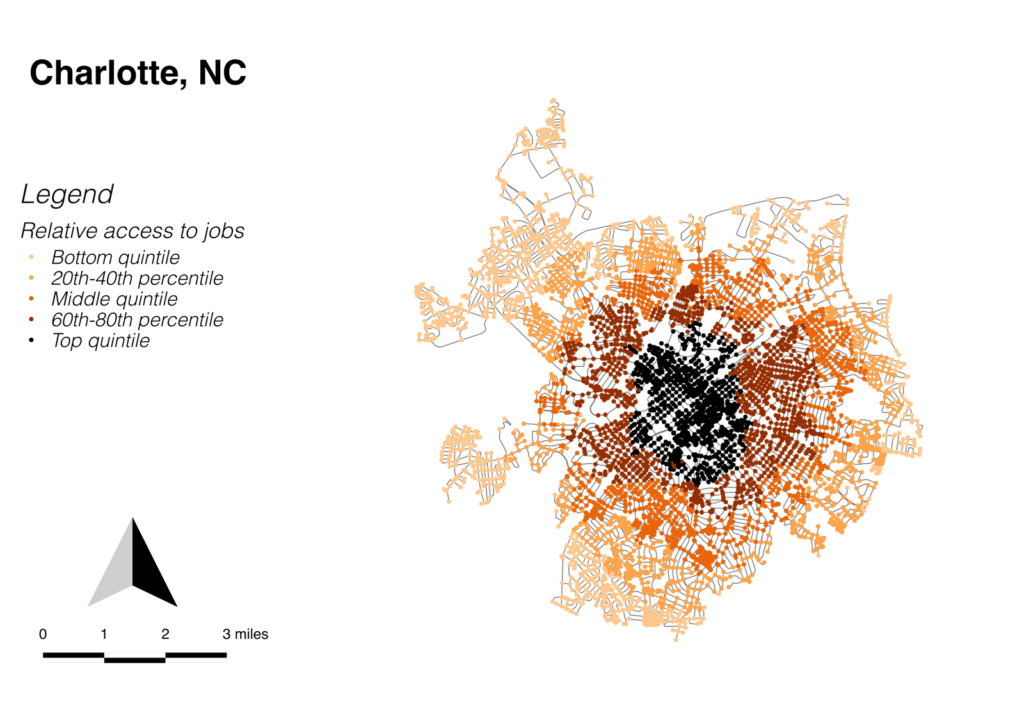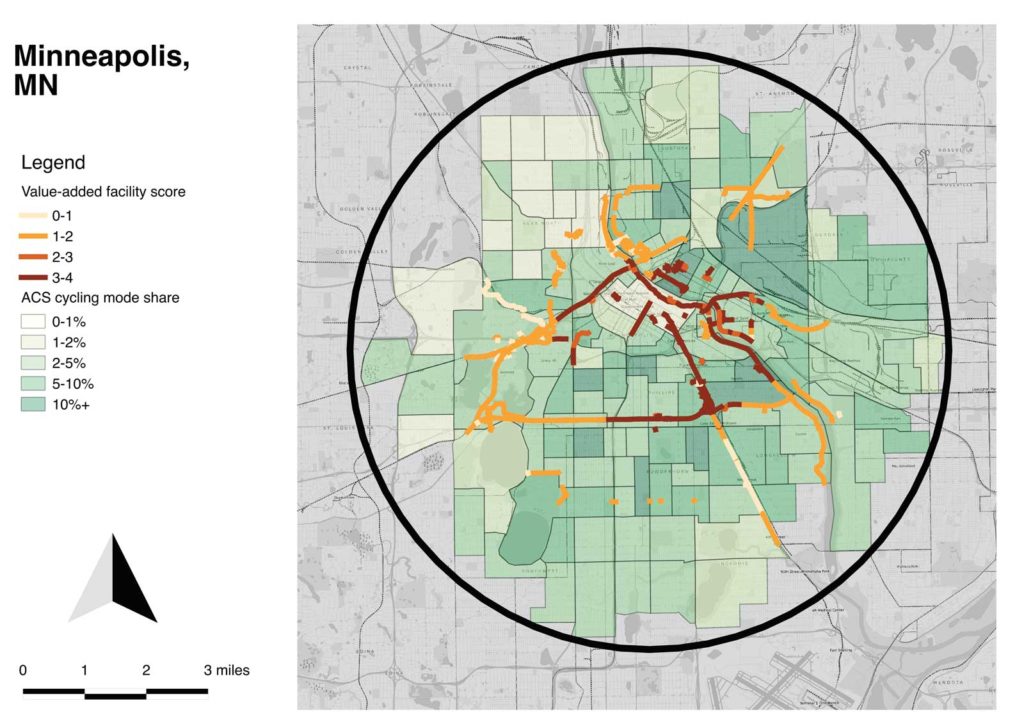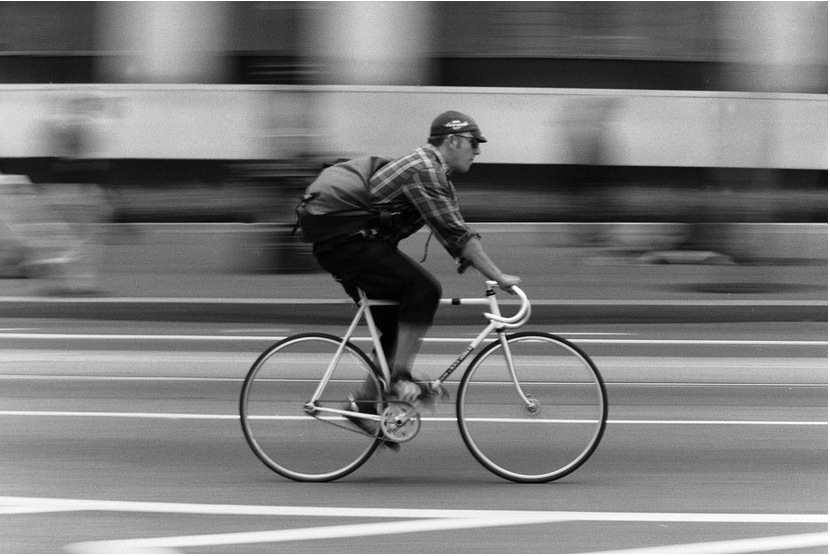Maps of network connectivity to jobs
One of the factors I’m trying to measure in valuing facilities is their usefulness; do they actually go where utility cyclists want to ride? One of the factors I used was access to jobs within 1.5 miles along the cycling network. These maps really visualize the differences in density of the street networks.




